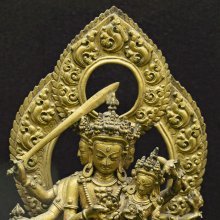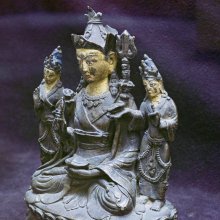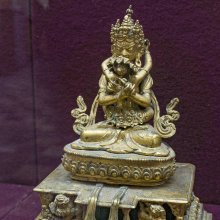Shaktisahita, Śaktisahita, Shakti-sahita: 1 definition
Introduction:
Shaktisahita means something in Hinduism, Sanskrit. If you want to know the exact meaning, history, etymology or English translation of this term then check out the descriptions on this page. Add your comment or reference to a book if you want to contribute to this summary article.
The Sanskrit term Śaktisahita can be transliterated into English as Saktisahita or Shaktisahita, using the IAST transliteration scheme (?).
Images (photo gallery)
In Hinduism
Shaktism (Shakta philosophy)
Source: Google Books: ManthanabhairavatantramŚaktisahita (शक्तिसहित) refers to “being accompanied by one’s consort”, according to the Manthānabhairavatantra, a vast sprawling work that belongs to a corpus of Tantric texts concerned with the worship of the goddess Kubjikā.—Accordingly, “[...] O fair lady, the gesture (there) is the Ocean of the Yoni. She is the Bhairavī Daṃṣṭriṇī. In the south, the gesture is Karālinī and the seat is the Great Ghost. It is associated with the three lines of teachers, Gaṇeśa and Vaṭuka. The god has a large form and eight faces, (each with) three eyes. He is accompanied by the consort (śaktisahita) mentioned above and is endowed with the sixty-four energies. [...]”.

Shakta (शाक्त, śākta) or Shaktism (śāktism) represents a tradition of Hinduism where the Goddess (Devi) is revered and worshipped. Shakta literature includes a range of scriptures, including various Agamas and Tantras, although its roots may be traced back to the Vedas.
See also (Relevant definitions)
Partial matches: Sahita, Shakti.
Query error!
Relevant text
No search results for Shaktisahita, Śakti-sahita, Sakti-sahita, Śaktisahita, Saktisahita, Shakti-sahita; (plurals include: Shaktisahitas, sahitas, Śaktisahitas, Saktisahitas) in any book or story.





